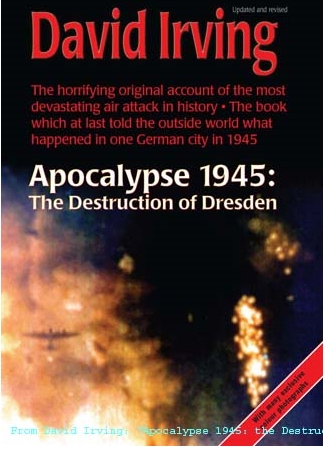 Free download of this book
Free download of this bookApocalypse 1945: the Destruction of Dresden
by David Irving
1963 Free download of this book
Free download of this book
FOREWORD by AIR MARSHAL SIR ROBERT SAUNDBY 135,000 people died as the result of an air attack with conventional weapons
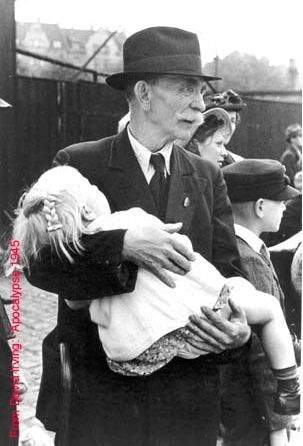
Dresden is filled with refugees on the night of the raid
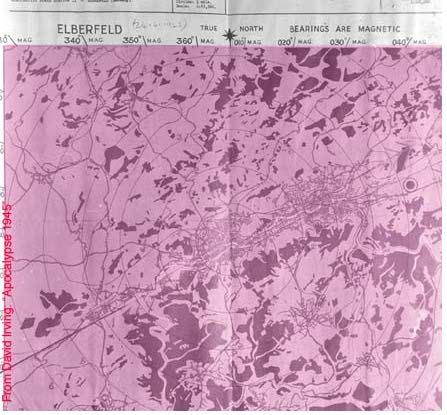
The aiming point was routinely marked in the center of the German town's
residential area. Here a line, and a X. marks where the bombs are to be
concentrated in Wuppertal Elberfeld. Five thousand died in the blaze. Meanwhile,
the politicians in Parliament lied.
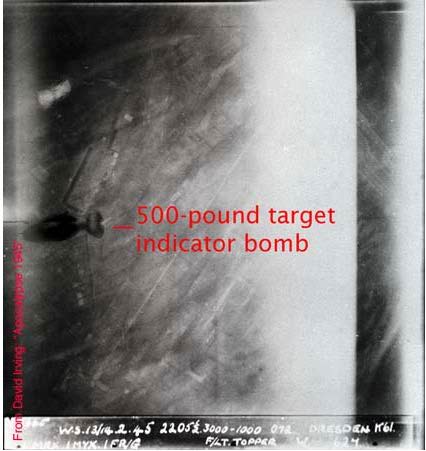
The first bomb on Dreden: a target indicator bomb released by Flight
Lieutenant William Topper, Marker Leader, hurtles down toward the Sports
stadium, marker reference point.
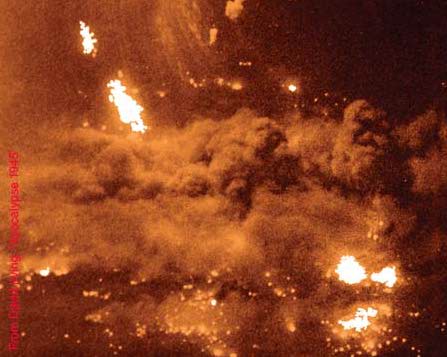
The candles of doom. The target indicators go
down over the already blazing city. The Germans called this eery spectacle
"Christmas Trees."
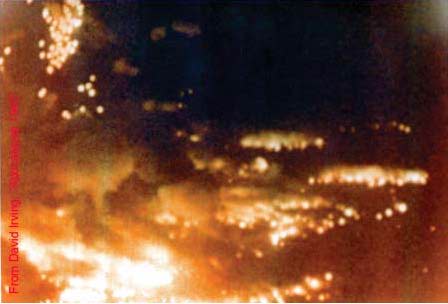
A horrific firestorm begins in a German city, as more target indicator
showers rain down as guides for the oncoming main force.
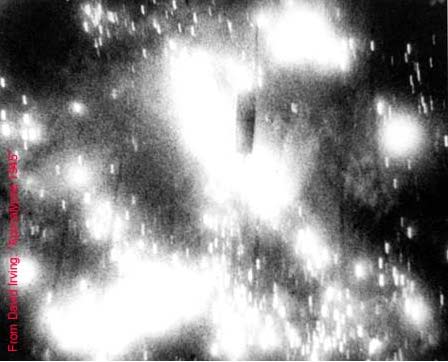
As the firestorm blazes, another 8,000 bomb hurtles down into the
inferno, silhouetted against the blazing city.
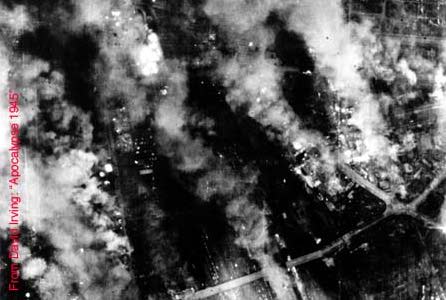
American bombers over Dresden at noon the next day found great fires raging.
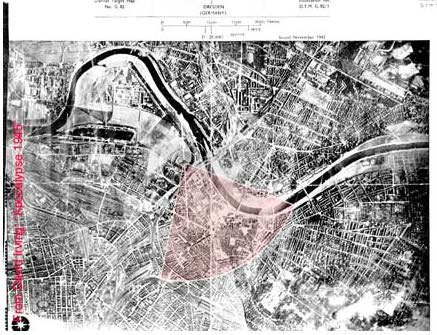
The Dresden target map actually used by Wing Cdr Maurice Smith for the first
attack on Dresden. It shows the fan shaped sector he was to attack -- the heart
of the famous old city. Those who claim the target was the city's industries or
bridges or railroads are lying.
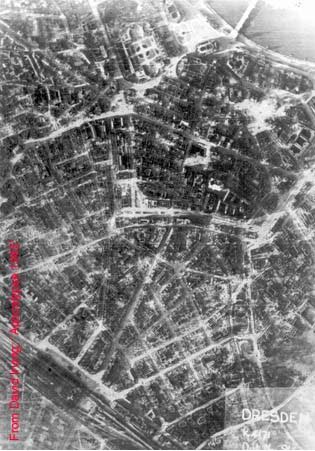
Not until March 1945 did a reconnaissance plane manage to secure an
aerial photo of the devastated city.
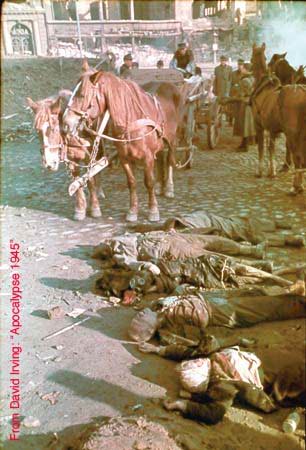
Remains of air raid casualties are gathered up for identification and open air
cremation in Dresden's Altmarkt square, Feb 25, 1945
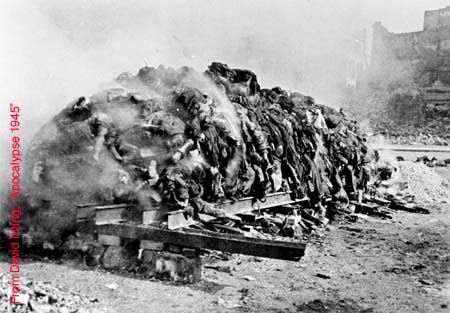
Remains of air raid casualties are gathered up for identification and open air
cremation in Dresden's Altmarkt square, Feb 25, 1945
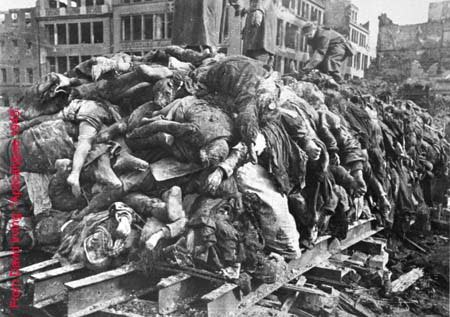
Troops heap up the bodies on makeshift pyres,
trampling them down to make room for more
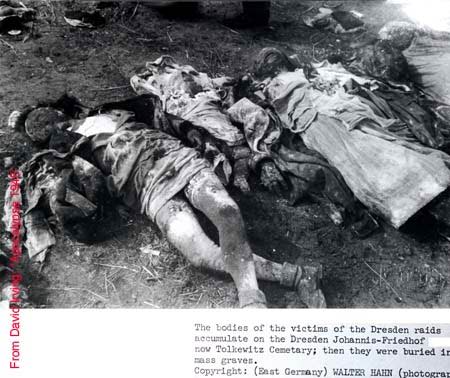
A family caught in the British air raid on Dresden, shortlybefore their burial at the Tolkewitz cemetery (later calle Johannis Friedhof). Their outer clothes and shoes are removed first for recycling.
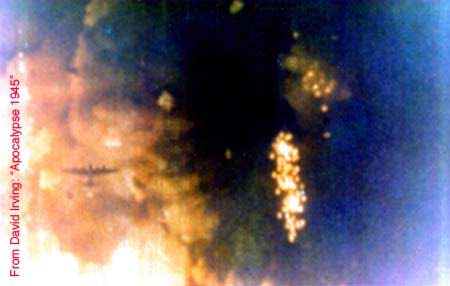
The devastating raids continue right to the end. On February 27, two weeks after
Dresden, the RAF obliterates Pforzheim, killing 17,000 in the firestorm -- one
in four of the town's population
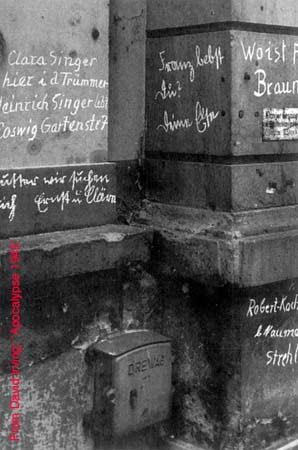
Pathetic chalked messages on the ruins of survivors seeking information
on missing wives, mothers family buried in the ruins.
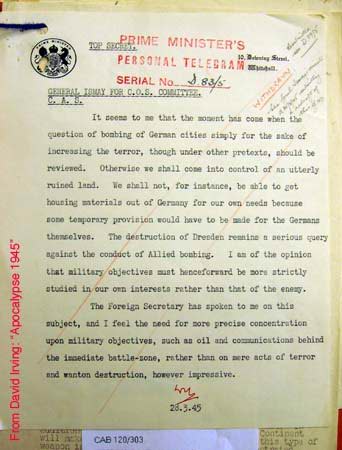
In March 1945 Churchill wrote to his Chiefs of Staff, attempting to shrug off
responsibility for the Dresden raids. They refused to accept the document
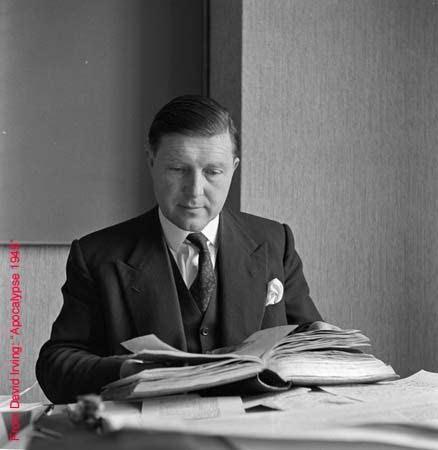
The RAF Master Bomber at the first Dresden attack, Wing Cdr Maurice Smith,
interviewed by author David Irving in his office, March 1962. Shown the apalling
photographs of the carnage, he went quiet and blushed.